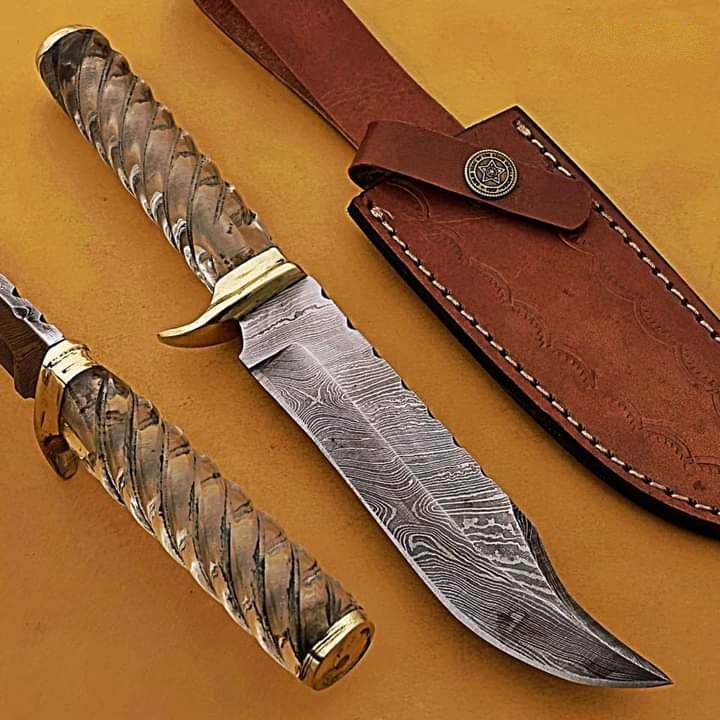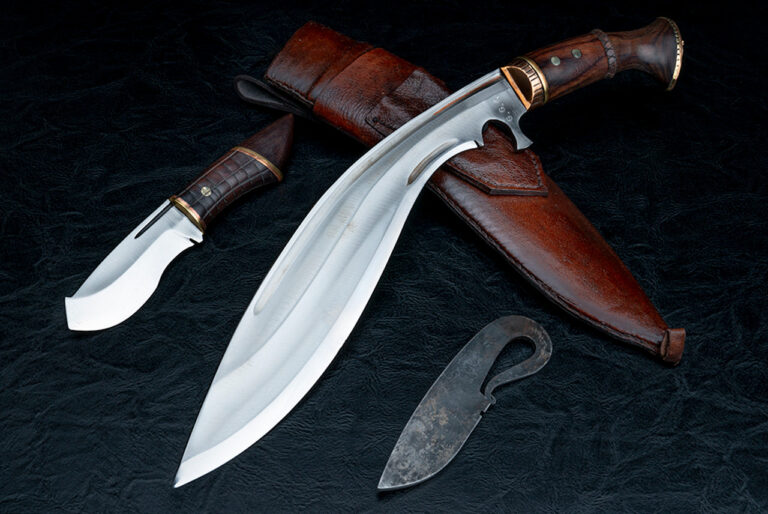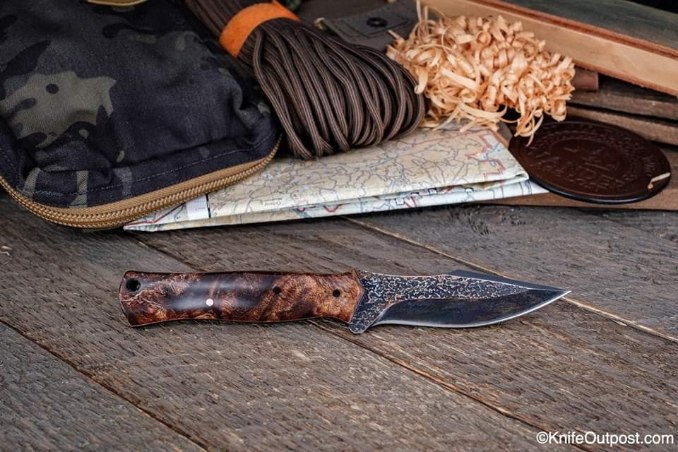Our Damascus steel is a blend of two types of steel: 15N20 and 1075. The 15N20 is a type of Nickel steel, which forms the captivating highlights of the pattern. On the other hand, 1075 steel, a Carbon steel, turns black upon etching.
When subjected to heat treatment and utilized in a blade, this combination retains an exceptional edge. Like any blade made from Carbon steel, it will develop a beautiful patina over time.
However, the components and food that are cut with the blade affect the patina’s overall color and character. One notable example is when a blade cuts through cooked red meat, it develops a visually pleasing blue-grey patina, which is often seen on traditional carving knives.
Caring For Your Blade
Taking care of a Damascus steel blade is similar to looking after a carbon steel blade in the sense that both are vulnerable to moisture. Once the blade forms a patina, it becomes more forgiving. That said, a fresh blade made of Carbon steel will rust in an instant.
Never, under any circumstances:
- Store the blade in direct contact with the leather
- Leave the blade submerged in standing water
- Rest the blade on a damp tea towel, washcloth, or similar surfaces
- Wash the blade in the dishwasher
The good news is that you only need to take some simple measures to ensure that your Damascus steel knife will be passed down from generation to generation.
After Use:
- Rinse the blade under running water and dry it with a clean cloth
- Apply a light coating of food-safe oil
- Store the blade in a dry place
During the initial stages of patina development on your blade, it is advisable to promptly wipe down the blade before transitioning to a non-knife-related task in food preparation.
- Oiling
When it comes to oiling a blade, you need to avoid a common error of using oils, such as olive oil. The reason being, it can become rancid over time. We highly recommend utilizing mineral oil instead, as it is safe for food, cost-effective, and easily accessible.
- Washing
For those who are new to Damascus steel knives, there is often a sense of apprehension while washing the blades. However, the cleaning process is pretty straightforward: rinse the knife under running water, gently wipe it with a dish sponge lightly soaped, rinse it once more, and then dry it thoroughly. If you are familiar with the concept of a “Bachelor Wash” (or can understand its implied meaning), this is all that is required.
- Refreshing The Pattern
As your Damascus steel knife undergoes usage, it is natural for the distinctive pattern to fade. However, there is no need to be concerned. You can easily address this issue. As the final step in our Damascus etching process, we use hot black instant coffee. It acts as a mild etchant and contributes substantially to the darkening of the pattern.
Here is how you can refresh your own blades:
- Prepare a batch of inexpensive black instant coffee. Make sure you have enough to fully submerge the blade.
- Clean the blade and wipe it thoroughly with methylated spirits to eliminate oils and impurities.
- Immerse the blade in the hot instant coffee, reheating if needed (heat speeds
- up the process). Be careful to avoid getting coffee on the handle.
- The duration can range from 15 minutes to an hour.
- Check the blade every 15 minutes by removing it from the coffee and allowing it to drip.
- Avoid touching or wiping the blade during this process.
- Once you achieve the desired outcome, remove the blade from the coffee. Wash it as usual, followed by oiling and proper storage.



